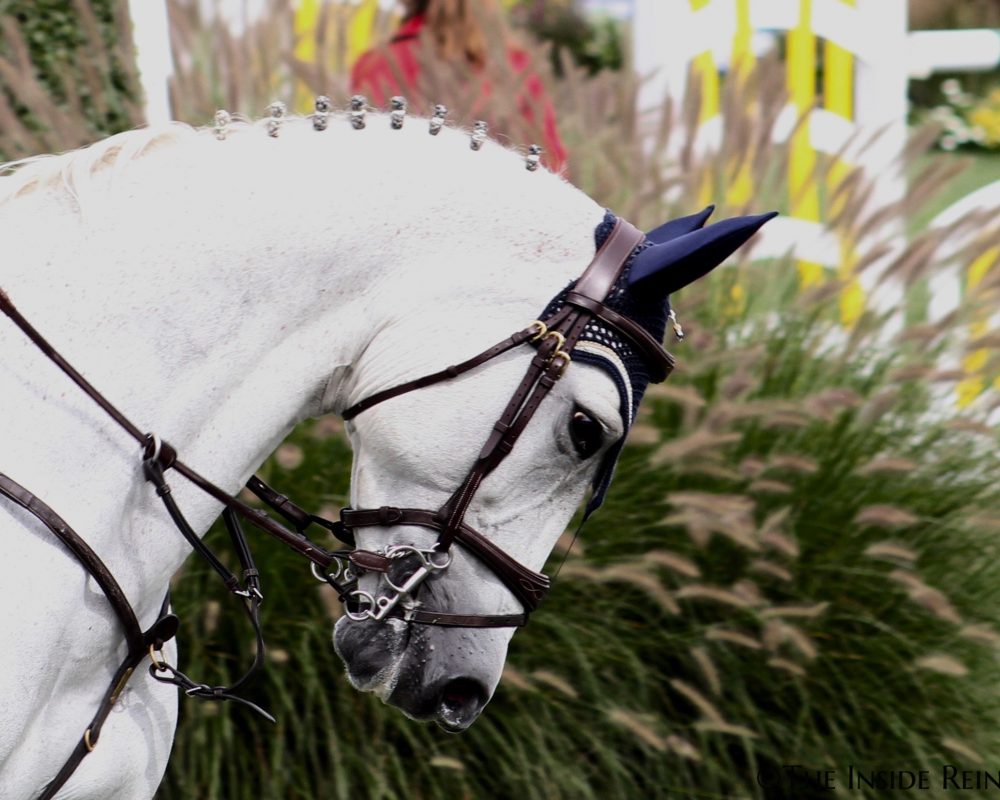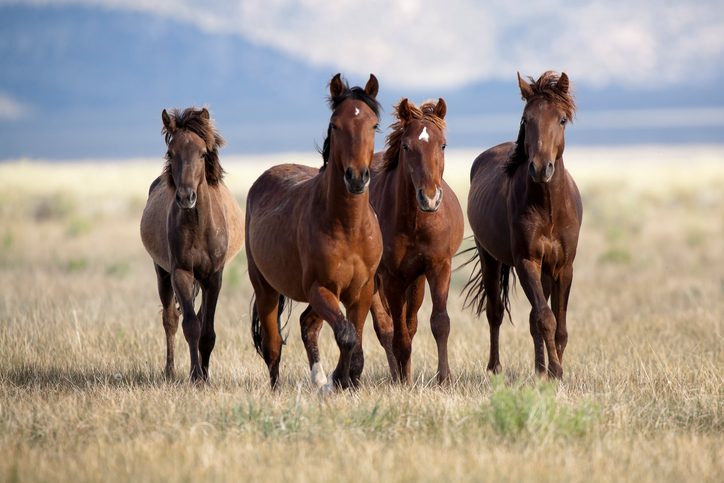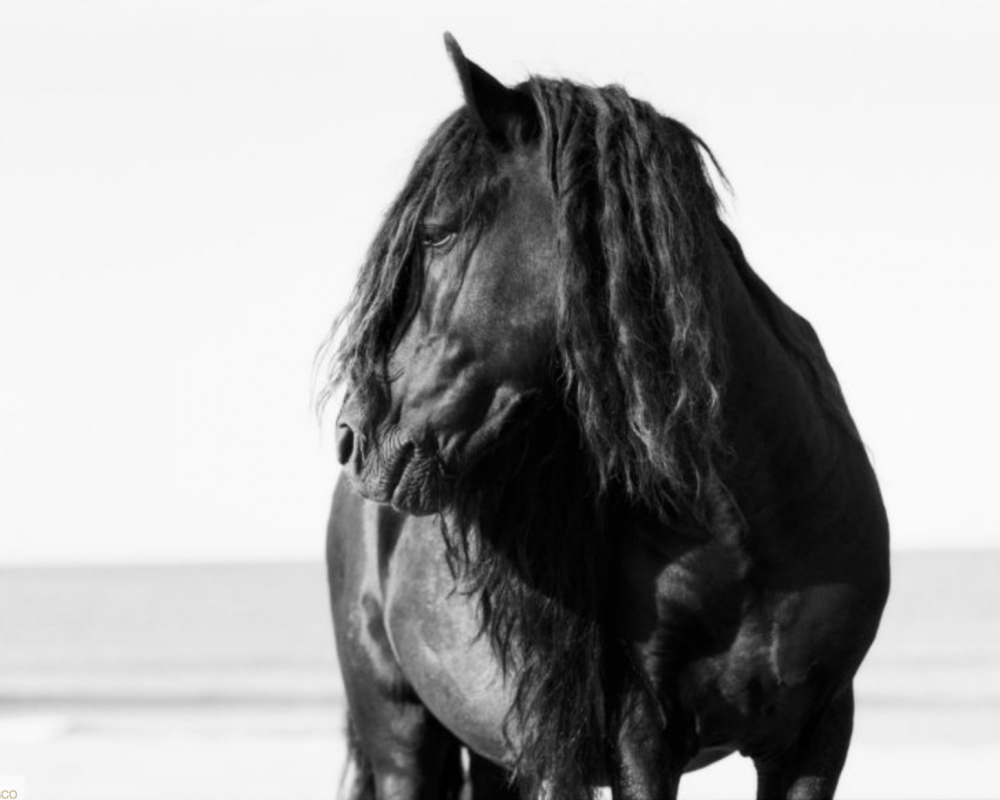The $100,000 Thoroughbred Makeover, sponsored by Thoroughbred Charities of America, gets underway tomorrow at The Kentucky Horse Park. We thought this would be a good time to repost our interview with the man behind Retired Racehorse Project and The Makeover, Steuart Pittman, whom we spoke with earlier this year. Enjoy, and be sure to follow the action from Kentucky!
Steuart Pittman’s passion for thoroughbreds began in the hunt field as a youngster perched atop his 12.2h pony. He was in awe of the sleek animals towering above. “Just like kids thinking sports cars are cool, I thought thoroughbreds were cool,” says Pittman.

Pittman’s Dodon Farm is located in the heart of Maryland’s racing community, so there was never a shortage of thoroughbreds to work with.
“Thoroughbreds were always the ultimate breed, even though my mentor and first trainer was the first person to import Swedish Warmbloods. Somehow that didn’t stick,” said Pittman, adding, “Thoroughbreds were always where my heart was.”
But as his training career progressed, he noticed a shift away from the breed he held in such high esteem.
“I saw a lot of my clients and peers moving toward non-thoroughbreds for the wrong reasons,” says Pittman. “I came to the conclusion that people do this sport for fun and thoroughbreds are more fun. Even if you can’t win a gold medal in dressage in the Olympics on a thoroughbred anymore, that’s not relevant to most people.”
So Pittman began his quest to re-popularize the breed. In 2009 he held a symposium in Maryland that aimed to educate trainers how to work with thoroughbreds, especially those off the track. Despite limited marketing, over 350 people from 10 states attended the event.
“We realized there’s a real demand for information and an untapped need for an organization like this. The fact these horses didn’t have anyone promoting them is why we started this. If the Jockey Club were like the Hanoverian Society and promoting horses for sport we’d not done this. Thoroughbreds don’t have a breed association, so it was kind of a no brainer.”
Now he’s the breeds’ strongest ambassador, on a mission to rebrand the thoroughbred through the Retired Racehorse Project. The non-profit organization was launched in 2010 and seeks to “build bridges to second careers, increasing demand for thoroughbreds.”
In 2012, the organization launched the 100-day thoroughbred challenge that drew an impressive in-person crowd as well as online following. In 2013 RRP organized the first Thoroughbred Makeover and National Symposium. Over 800 people attended, while thousands followed the event online. That major success resulted in a commitment to continue the mission.
The Thoroughbred Makeover allows trainers a finite amount of time to take recently off-the-track thoroughbreds (OTTB’s) and educate them in one of ten new disciplines, ranging from show jumping and eventing to working trail and barrel racing. Their months of hard work culminate at the national symposium where they compete for America’s Most Wanted Thoroughbred.
The makeover not only benefits the horses, but the trainers as well – a fact to which Pittman can attest. “Without thoroughbreds I would have never become a trainer. It’s all you can afford. You prove yourself with thoroughbreds and if you’re good enough people start paying you to do it. Part of the reason the makeover is so popular is because a lot of these people are trying to prove themselves and get publicity as trainers.”
This year’s thoroughbred makeover and symposium will take place at Kentucky Horse Park from October 27-30. There are 500 trainer slots open with applications due by January 31, 2016. In the first week alone over 170 applications were received, and Pittman is pleased with what he sees.
“The quality of applicants is higher this year because we told people we’re going to screen them,” says Pittman. “They have to demonstrate competence in their discipline with video references and competition results.”
But putting on such an event doesn’t come cheap. With $100,000 worth of prize money up for grabs and the cost of organizing ten different disciplines – essentially 10 horse shows – last year’s cost to run the event topped out at nearly $370,000.
Some money comes from membership fees, but sponsorships are the key. Currently at 1,000 members, the organization is not yet self-sustaining. Pittman estimates they’ll add another 2500 members by the end of this year, “10,000 members is the magic number that will help support the organization long term and cover the basic core budget,” says Pittman, suggesting they could hit that number in the next 4 years.
Fortunately, sponsors have been stepping up in a big way. “It’s a mix of thoroughbred industry sponsors and riding industry sponsors and companies that have products that they want associated with the cause.”
Because RRP is a charitable organization, there are individual donors as well who take advantage of a tax write-off while helping the animals.
“The direct investment in the care and training of horses is about $7,000 per horse – and that’s lowballing it – times 500 horses,” says Pittman. “That’s a 3.5 million dollar investment in care and training to secure the future of those horses.”
While Pittman’s initial goal may have been to re-introduce the thoroughbred as something more than just a racehorse, there have been additional tangential effects. Perhaps the most important is allowing these young retired horses a second shot, keeping them out of the auction-to-kill-pen pipeline.
“The whole slaughter thing is an issue, though we don’t connect it to RRP as much,” says Pittman. However, The Maryland Horse Council, of which Pittman is an elected member, was the first state council to take a position against slaughter this past November.
“I think the industry is going to move in that direction [oppose slaughter]. I’m eager to see it coming. It’s stupid for the horse industry to support slaughter when 70% of its members oppose it,“ states Pittman.
Another benefit of RRP is the growing relationship between the thoroughbred industry and the show horse world.
“Racing hadn’t really noticed there’s a horse industry outside of racing. That’s actually the solution to the problem,” says Pittman. “They have never been good at marketing their horses, never really tried. It’s taken a little bit of time but the excitement from the racing industry has been huge. And on the other side the riding people who don’t have any respect for the racing industry because they think its all about money and abusing horses are learning a lot about the racing industry through this, much of which is pretty darn impressive.”
Additionally, discipline organizations from the United States Eventing Association to the United States Polo Association are taking notice and getting involved. “Most national associations see this as good stuff because it’s a market for their sport, and the racing industry loves it because it’s a market for their horses.”
Author’s aside: As someone who grew up with her own OTTB, I can vouch for thoroughbreds as jumpers. Despite not being able to initially turn right after so much time running counterclockwise, my big thoroughbred became an amazing jumper, eventer, and friend.
Article by Ashley Fairfield-Remeza



Leave a Reply